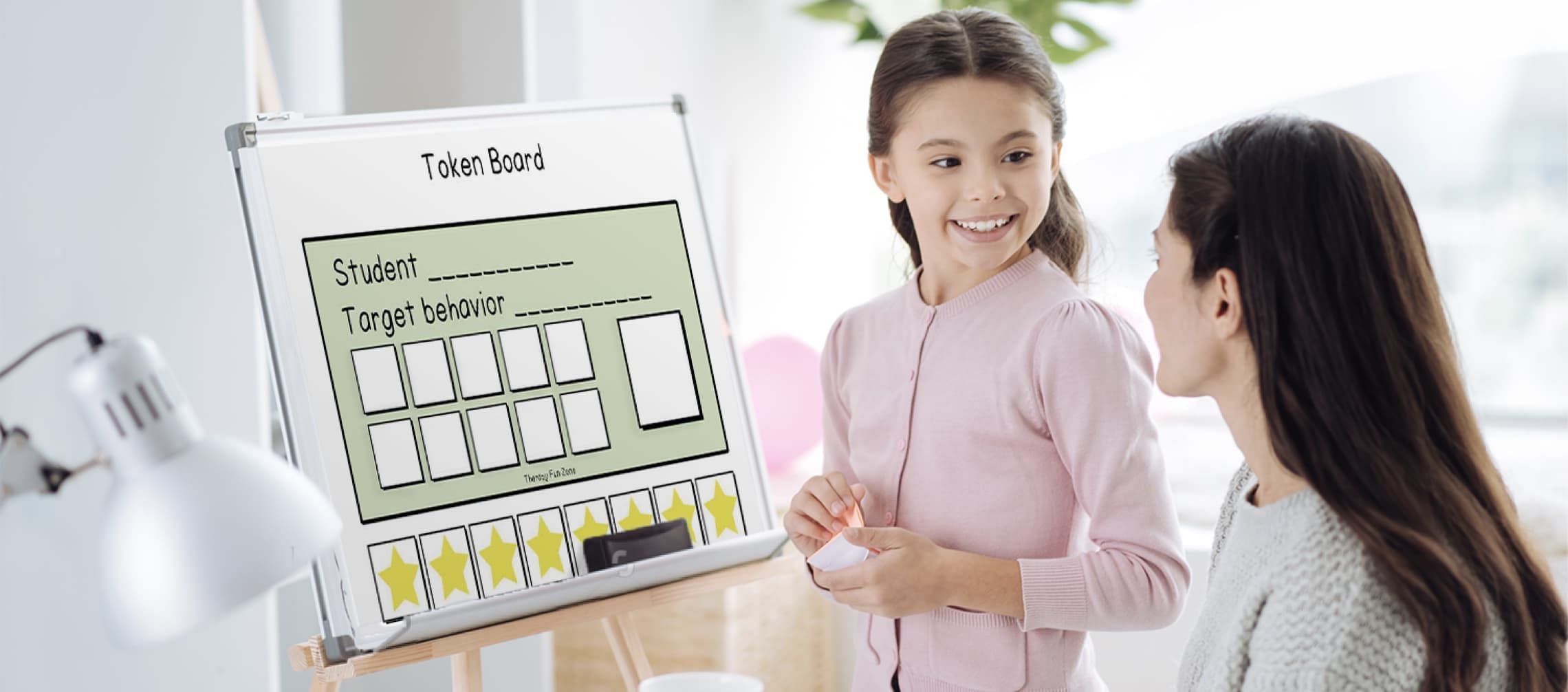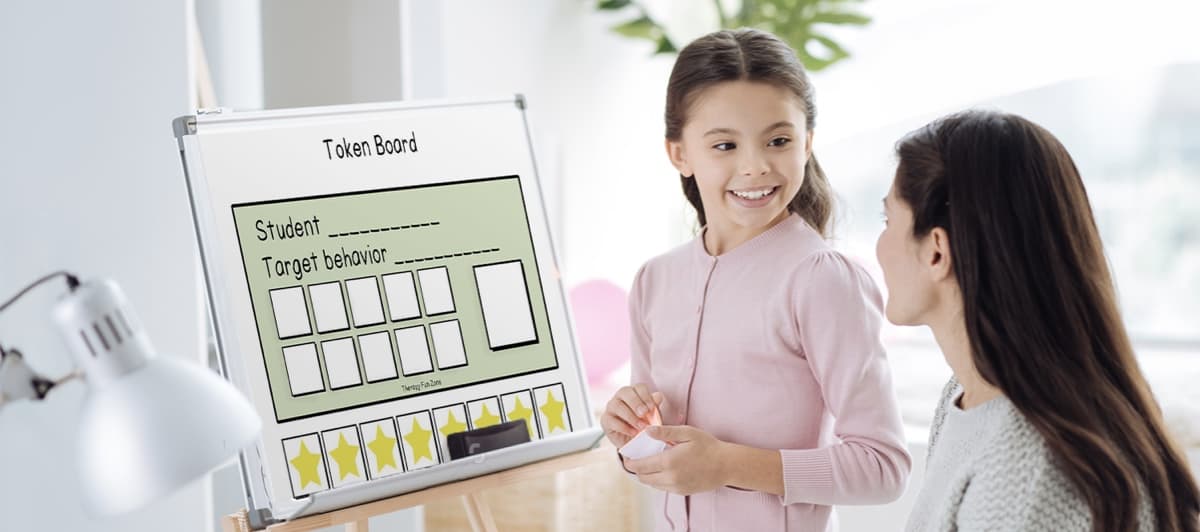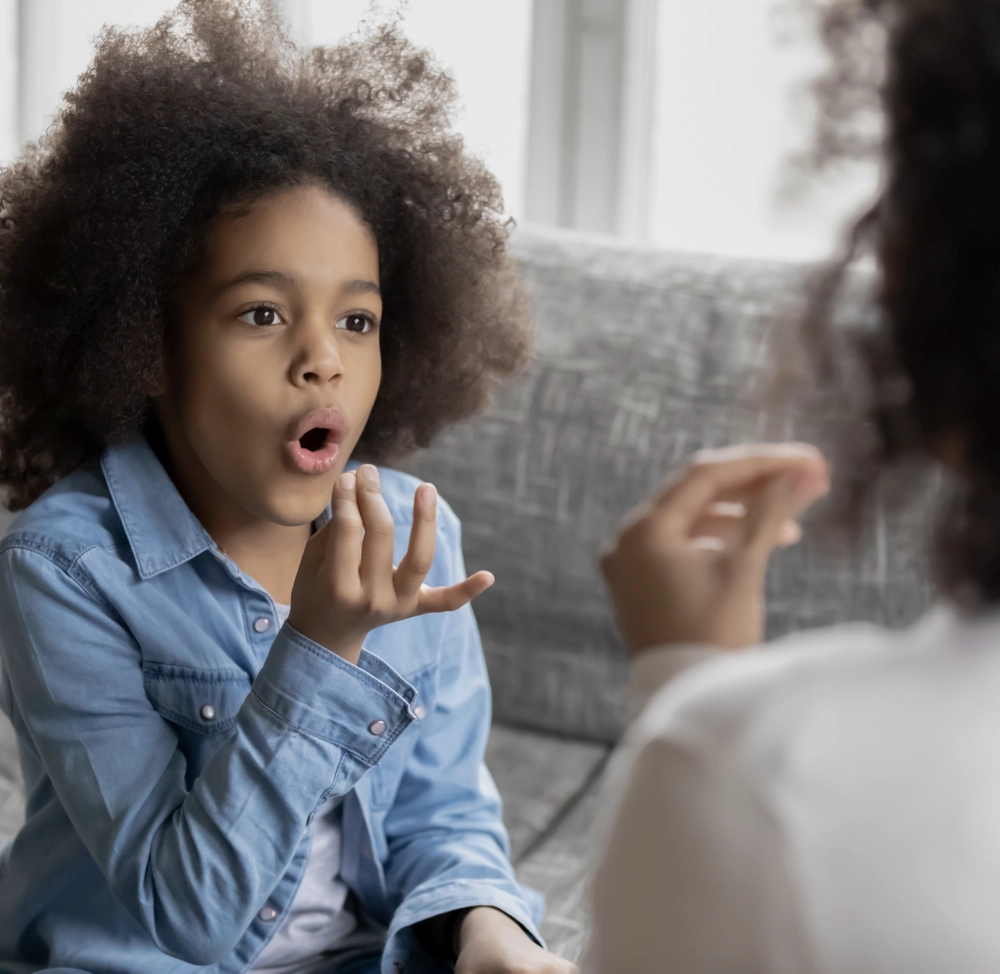The token board system is a beneficial tool for parents of a child with developmental exceptionalities. We understand it can be challenging to help your child learn new skills, improve their behavior, and increase their independence. A tool that can help you achieve these goals is the token board system.
In this post, we will discuss what a token board system is, why it is important, and the various ways you can use it.
What is a Token Board System?
The token board system provides a visual to represent rewards your child can earn using tokens or symbols to reinforce desired behaviors. Your child earns the tokens by exhibiting appropriate behaviors, and your child can exchange them for a preferred item or activity. The token board is a visual way for the child to keep track of the tokens they have earned and the items or activities they can choose as a reward.
Why is a Token Board Important?
Token boards are important for several reasons. They can help to increase your child’s motivation to engage in desired behaviors. Your child may be struggling with motivation, and the token board system provides a tangible reward for their efforts. This can help increase the frequency and duration of desired behaviors, leading to improved skills and fostering independence.
Token boards help to reward appropriate behaviors. Reinforcement is a critical principle in behavior analysis, and using a token board provides an organized way of rewarding desired behaviors. Using a token board can provide immediate and consistent reinforcement for appropriate behaviors, which can help to increase the likelihood that your child will perform these behaviors again in the future.
The use of token boards can reduce problem behaviors. By providing a token for appropriate behaviors, your child will be less likely to engage in problem behaviors because they know they will be rewarded for exhibiting positive behaviors. Additionally, suppose your child engages in a problem behavior. In that case, you can prompt your child to take a break and engage in a different activity until they are ready to try again.

5 Ways You Can Use the Token Board System
Token boards can be used in many ways to meet the child’s needs and the parents’ goals. Here are some examples of how you can use the token board system:
- Task completion: You can use a token board to reward the completion of tasks, such as completing homework, participating in therapy, or following routines.
- Good behavior: You can use it to reward your child’s good behavior, such as following directions or exhibiting appropriate social skills.
- Communication: You can use the token board to reward communication skills, such as when your child is using words, singing, or using a communication device.
- Self-care: You can use the token board to reward self-care skills, such as when your child is practicing brushing teeth, washing hands, or getting dressed.
- Potty training: A token board can be used to reward successful attempts at using the toilet.
Summary
The token board system is valuable for parents of children with developmental exceptionalities. By providing a visual reward system, token boards can help to increase motivation, reward appropriate behaviors, and reduce problem behaviors. Depending on the child’s needs and the parents’ goals, you can create and use a token board in various ways. We encourage you to consider using a token board to reinforce appropriate behaviors and support your child’s development.
If you would like to speak with a specialist about ABA therapy, contact us here. Follow us on Facebook, Instagram, LinkedIn, and Twitter to stay on top of our latest updates.






Leave A Comment